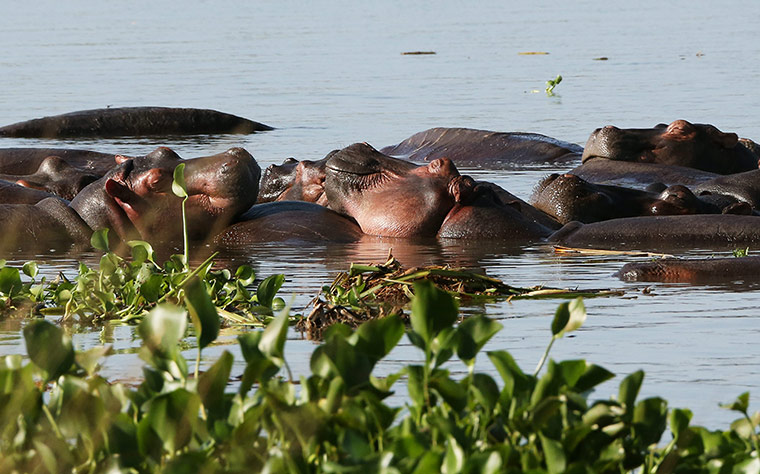Dear Digest Readers,
We want to share some good news. Our readership is up! Others are discovering the value the Digest brings to their inbox. Since early October, we have gained over 50 new subscribers bringing our membership total to over 2750!
 To date we have received a little over $850 in contributions from about 25 individual donations towards our funding goal of $40,000 by December 31, 2012. We very much appreciate your generous contributions! Thank you!
To date we have received a little over $850 in contributions from about 25 individual donations towards our funding goal of $40,000 by December 31, 2012. We very much appreciate your generous contributions! Thank you!
While our new members are getting acquainted with all the useful information the Digest offers its readers, we are looking to our long-standing readers, some of whom have been reading since 2008, to consider showing their support. Is the Digest worth $1.25 per month for an annual contribution of $15? Maybe more, maybe less? No matter the amount, any contribution is appreciated and gets us that much closer to our goal.
While you think about it, browse the headlines from an issue earlier this week or all the way back to 2006. Skim the latest additions to the event calendar, job/academic opportunities and other professional announcements. Check out the most recent Journal Articles on your preferred research topics, with over 2400 citations related to wildlife disease. Find out where wildlife health events are happening in the news in your neck of the woods.
 Where else can you get so much wildlife disease information in one place? Consider supporting this unique and valuable resource. >>> Donate today!
Where else can you get so much wildlife disease information in one place? Consider supporting this unique and valuable resource. >>> Donate today!
Sincerely,
The WDIN Team
Cris Marsh
Megan Hines
Vicki Szewczyk
Dr. Kurt Sladky
TOP STORIES
Waterbird die-off hits Lake Michigan
In a dramatic scene along the Lake Michigan shoreline in Schoolcraft County, researchers have recently discovered the carcasses of nearly 700 dead waterbirds, thought to be the victims of Type-E botulism.
Similar large Lake Michigan bird die-offs were recorded in the Upper Peninsula in October 2007 and downstate near Sleeping Bear Dunes National Lakeshore in 2006.
"During two weeks in mid-October, a seven-mile stretch of beach near Gulliver amassed 413 carcasses, including 236 common loons," said Damon McCormick a loon researcher from Common Coast Research and Conservation. "This episode was preceded by a September mortality event that primarily involved horned and red-necked grebes."
Dead birds were intoxicated, an investigation finds
Young blackbirds found dead at a primary school in Cumbria suffered from alcohol poisoning, according to an investigation. Animal health specialists were called to examine a dozen birds found in the playground, many with trauma injuries.
Post-mortem analysis revealed that one of the birds had a large amount of pure alcohol in its liver. Scientists suggest the birds sustained their injuries in flight because they were intoxicated by fermented berries.
Staff from the Animal Health and Veterinary Laboratories Agency (AHVLA) published their results in the Veterinary Record.
Cats new suspect in dolphin deaths
Kitty litter or droppings from ferals threat to endangered Maui's. A new suspect has emerged in the decline of the critically endangered Maui's dolphin - cats.
A parasite traced to cats has been identified as the primary cause of death in seven of 28 Hector's-type dolphins analysed by Massey University scientist Dr Wendi Roe.
Two of three Maui's, autopsied after they washed up dead on beaches, were found to have died primarily from toxoplasmosis, an infection caused by the toxoplasma parasite.
OTHER WILDLIFE HEALTH RELATED NEWS
- Student studies diseases of wild urban rats [Canada]
- Deer in Mower County tests positive for rabies [Minnesota, USA - Map It
 ]
] - Who brought the flu in? Tough to pin the birds down [India]
- CWD testing gets underway with opening weekend [Minnesota, USA]
- 2012 ASFWB [ Atlantic Society of Fish and Wildlife Biologists] Meeting hosted by CCWHC [CCWHC healthywildlife.ca blog]
- Nevada desert bighorn sheep moved to Utah
- Bat research around Idaho desert caves prepares for disease [Idaho, USA]
 |
| Hippos rest near the bank of the Nile River in the Murchison Falls national park, Uganda. The Guardian's Week in Wildlife Credit: Gernot Hensel/EPA |
- Rare whale's carcass washed up on beach near Kimmeridge [Kimmeridge, England - Map It
 ]
] - 80 Whales, Dolphins Die After Stranding in Tasmania [Tasmania, Australia - Map It
 ]
]
- Zoonoses diseases: experts underscore need for taking preventive measures
- Tiger Mosquito, Vector of Chikungunya Virus and Dengue Fever, Is More Flighty Than First Thought
- 5 Questions: Forecaster eyes West Nile virus
- Living bird species mapped
- NEW THREE-FINGERED FROG DISCOVERED[The researcher attributes the missing fourth finger to an evolutionary process rather than to an environmental effect]
- The D-Day messenger pigeon reminds us how amazing these animals are
- Sandy blows in rare birds (and brings out the birders)





No comments:
Post a Comment